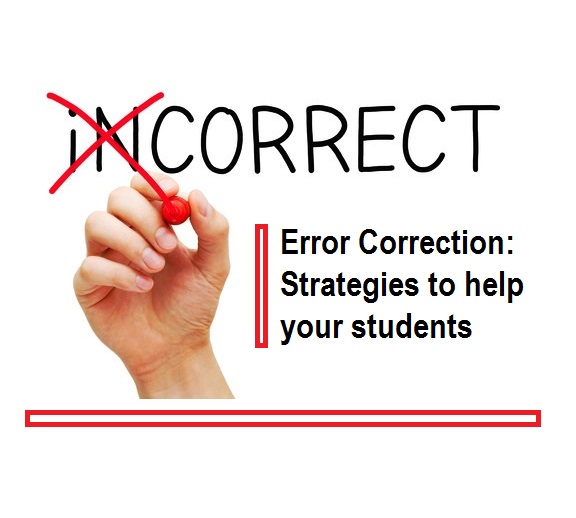Practical Error Correction Strategies For English Teachers
Students’ error correction is an indispensable aspect of teaching. Traditionally, errors and mistakes made by students were frequently corrected because the focus was on accuracy. A couple of decades ago, it has been a common practice for teachers to correct students whenever they make a mistake. Errors and mistakes were seen as something that must be prevented immediately through intensive drilling and modeling.
This was seen with Grammar-Translation-Method where teachers focused on the correct form. However, with the current trends of foreign and second language teaching such as: Task-based approach, content-based approach and communicative language teaching. Error correction has profoundly changed. As brown (2000) said: “people learn a language through trial and error. It is natural that the learners make mistakes while they learn a second language”.
It has become a common belief that there is no need to change learners’ errors because they are natural phases of the development of effective communicative skills.
In this post, I will share with you some of the strategies that you can use to correct your students’ mistakes and errors. Some of you already know about these strategies, some of you know some and some of you already use some but they don’t know the names. It is important to know and master different correction strategies because your students learn the target language differently .. they are probably making different types of errors and mistakes. And as you know: one size doesn’t fit all.
Explicit correction:
Refers to the explicit provision of the correct form by the teacher. s/he indicates what the student said is incorrect and they immediately provide the correct answer.
Example:
- Student: I’m tall than my brother.
- Teacher: Oh, you mean .. you are taller than your brother.
Recast:
The teacher reformulates all or just part of the student’s response. He repeats the response with the correction in a question form.
Example:
- Student: I’m more tall than my brother.
- Teacher: You are taller than your brother?
Meta-linguistic feedback:
Without providing the correct form, the teacher poses a question, provides a comment or information related to the student’s response.
Example:
- Student: I’m more tall than my brother.
- Teacher: Do we say tall?
Clarification request:
The teacher uses phrases like: could you repeat, please?, I don’t understand, pardon me, excuse me… etc. the teacher indicates that the message hasn’t been understood and some repetition or reformulation is required from the part of the student.
Example:
- Student: I’m more tall than my brother
- Teacher: Could repeat please?
Elicitation:
The teacher directly elicits the correct form from students by asking questions like: (how do we say “….” In English), or pausing to allow students to complete their utterance, or asking students to reformulate their response (say that again).
Example:
- Student: I’m more tall than my brother
- Teacher: What is the comparative adjective of tall?
Echoing:
The teacher repeats what the student said, emphasizing the error.
Example:
- Student: I’m more tall than my brother
- Teacher: You are more TALL than your brother.
Hinting:
The teacher gives the student a simple suggestion such as: tense, article….etc.
Example:
- Student: I’m more tall than my brother.
- Teacher: Comparative adjective.
Facial expressions or para-linguistic feedback:
The teacher uses his body language (a gesture or his facial expressions) to show there is a problem with the student’s response.
Example:
- Student: I’m more tall than my brother.
- Teacher: …
If you like this post or you think there is a colleague who needs to know about this, please share.
Read more about error correction
Effective Error Correction in ESL & EFL Classrooms
Error correction in EFL classroom: practical suggestions for effective use








Excellent blog here! Also your site loads up very fast!
What host are you using? Can I get your affiliate link to your host?
I wish my site loaded up as fast as yours lol
Because the admin of this website is working, no hesitation very shortly it will be renowned, due to its feature contents.